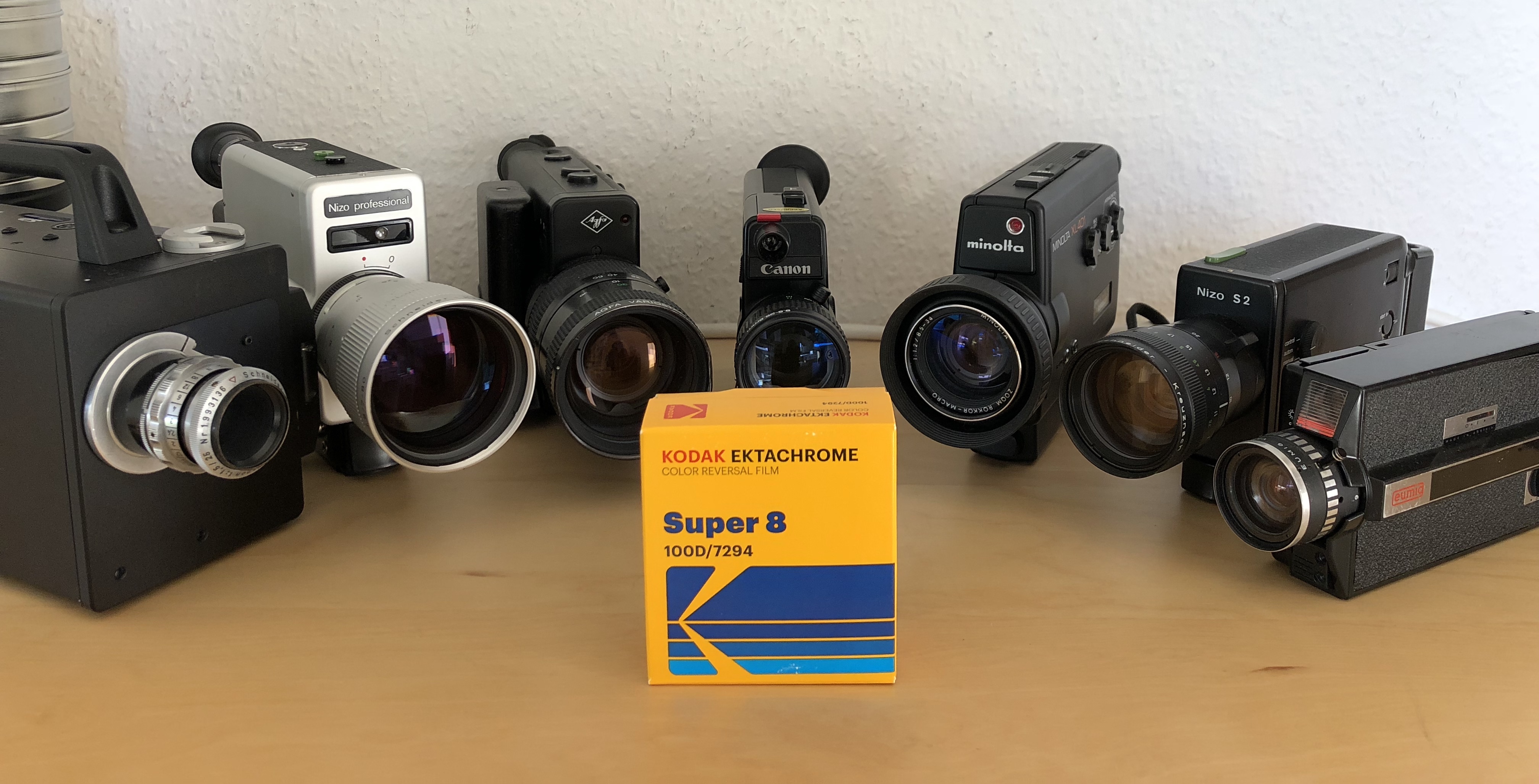
Ektachrome is back! Since October 2018, the eagerly awaited Super 8 color reversal material has finally hit the market. You can already read in many film tests that the new emulsion provides wonderfully fine-grained pictures and in particular realistically reproduces skin tones. But how do different cameras behave with the new film?

Since the Super 8 camera is always on the move, I wanted to test all of my seven film cameras in a big test with a film cartridge. At the end of October, the sun bathed the landscape in golden light, so I took my tripod and cameras to nature, shooting a short scene each time. A herd of sheep and a cat with amazing stamina were my motives.

I started with the Agfa Movexoom 10. The movie ran wonderfully evenly through the quietest camera in my collection. I have determined and set the aperture value with a Gossen light meter.

It continued with the beautiful Nizo Professional from Braun. Since the camera recognizes ASA100 film correctly, I have the value automatically determined by the camera. After that came the Minolta XL401. Since they read ASA100 as ASA160 and therefore expose too dark, I used a gimmick in advance, which I have read on Super8Wiki.com: If you unscrew the case of the camera, you will find a small potentiometer underneath, which can be adjusted until you have the correct ASA setting. After this short and easy procedure, the camera reads the movie correctly. Next it went with the Canon 514XL, which in turn automatically exposed correctly.

It was followed by the Braun Nizo S2, which I appreciate because it is so handy. For years, I have used a conversion made by camera technician Christophe Goulard at Re: voir in Paris. He has mounted a manual ASA dial on the case, which makes it possible to expose the 100D perfectly.
It became exotic with the Emig Mini Zoom reflex, whose compactness inspired me, but which has only a few settings. It exposes the film with ASA50 instead of 100, which would certainly make the picture too bright. Since the new material has a large density range, I also took this camera and wanted to know how it can cope with overexposures.

Finally, a special camera: the Logmar S8, which a Danish company sold in a small number of beta testers years ago. The film is looped out of the cassette and using a real pressure plate, sharp pictures are possible. For the test I used a Kern switar f = 10mm and a Schneider-Kreuznach f = 100mm.
I then developed the film myself in E6 and had it scanned at 4K at Ocho y Pico in Madrid. The result can be seen on Vimeo. Due to the compression, it is worth downloading the file in highest resolution. It should be noted that no image stabilization or color correction has been made. Minimal jitter in the scan was not visible in the projection (especially in the Logmar shots).
Conclusion: the new Kodak Ektachrome runs through the cassette easily, no matter which camera it is in. This, of course, the picture is much better than I have experienced with the old Ektachrome in which occasionally jammed a cassette. I found it exciting to see how different the colors were rendered from the individual cameras. While the Nizo and the Agfa produced similar warm images, Minolta and Canon were rather cool. “Super 8, Super 8 film, on the wall, who’s the fairest of them all?” This question related to cameras is subjective, which is why I can only roughly answer them. The worst was the Eumig, followed by the Canon. The best was the latest camera, the Logmar, closely followed by Agfa and Nizo Professional. I would particularly mention the handy, well-equipped Minolta, which impressed me with its surprising sharpness.
But no matter which camera the reader chooses: with the new Ektachrome, you get a colorful, smooth and fine-grained color reversal material that makes analogue film projection fun again!
This article first appeared in a similar form in the last issue of the magazine Cine 8–16, December 2018, p. 14–15.










Related Posts